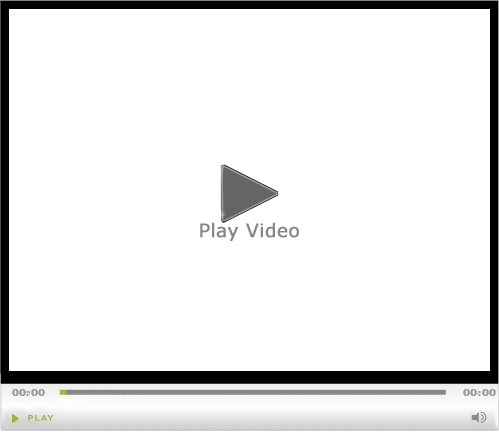


 Arrives before Christmas
Arrives before Christmas 

To see if this custom-fit item will work for you please tell us what vehicle you'll use it with.
This fully welded trailer hitch receiver bolts onto your vehicle's frame with no welding required. Receiver sits beneath your bumper so it's out of the way when accessing cargo. Powder coated steel is sturdy and corrosion resistant.
Features:
Specs:
California residents: click here
Videos are provided as a guide only. Refer to manufacturer installation instructions and specs for complete information.
Hello, neighbors, it's Brad here at etrailer, and today we're taking a look at installing the Towsmart Trailer Hitch Receiver on a 2022 Hyundai Palisade. This is what your hitch is gonna look like when it's installed, and it's a hidden cross tube, so you really get a nice clean look overall with really only the receiver tube opening hanging down. So you get all the usability of the hitch, but a nice clean look in the process, and this receiver tube opening is a two inch by two inch, and that's gonna be the standard, really, when it comes to accessories. So if you're getting a cargo carrier, a bike rack or a ball mount, you're gonna have tons of options available, and all of those are gonna stay in place with a 5/8 pin and clip. Now, this is not included with the hitch. Many times when you pick up accessories, they'll have them included, but if you plan on leaving accessories on the back of your vehicle, I'd highly recommend getting a locking pin and clip to become a deterrent, and that way people can't just walk by and take those accessories with them.
Now, if you plan on pulling a trailer, you're gonna have safety chains that you're gonna attach to your rolled style safety chain loop, and that's nice and open for a standard S hook. Even a larger clevis style will be able to hook onto here with no problem. Now with that being said too, if you are planning on pulling a trailer and getting a ball mount, I recommend picking up four-pole trailer wiring, and that's gonna give you the light signals from your Palisade to the lights on the trailer. This is a super easy installation on this vehicle. We used this Tekonsha kit today, and it really is just plug and play, and it's something that you're gonna wanna knock out while you're doing your hitch.
You're already there, and it's nice to have just in case. You know, even if you don't plan on pulling a trailer, it's a good addition. That way if you ever have to, you can legally do it. Now when it comes to towing or putting any accessories in place, you do wanna adhere to the weight capacities of the hitch as well as what the owner's manual says for the vehicle. This hitch is gonna be rated at 5,000 pounds for your gross trailer weight rating, which is gonna be the weight of the trailer plus the accessories loaded onto it.
Your tongue weight rating, which is gonna be the downward pressure on the inside of the receiver tube opening, is really gonna account for any of your suspended accessories, bike racks, cargo carriers, things of that nature, and it's gonna come in at 500 pounds, which is still plenty enough. You could get a four-bike bike rack, and depending on the weight of the bikes, you can get that thing fully loaded up. Or even a cargo carrier on vacation, 500 pounds is a decent amount of weight. Now, this can be used with a weight distribution hitch, and if you do have that, it's gonna bump the numbers up. You're gonna get a gross trailer weight rating of 6,000 pounds and a tongue weight rating of 750.
If you do need to squeeze out a little bit more capacity, a weight distribution hitch is a great way to do that. Now, when choosing ball mounts, bike racks or cargo carriers, you wanna make sure it's gonna work with this vehicle, and it's pretty open here, but you wanna make sure that if you have something that folds like a bike rack or cargo carrier, it stows in a vertical position and not always can you use it with every vehicle. So it's important to measure from the center of the hitch pin to the furthest point of the fascia. It's about 3 1/2 inches. So I don't foresee any real issues with a lot of the accessories out there, but keep in mind, when they're stowed in the vertical position, you're not gonna be able to open up your rear hatch unless you fold those down, but that's kinda the nature of having those folding accessories. Now, as far as ground clearance goes, from the top of the receiver tube opening to the ground, we're coming in at about 13 1/2 inches, and that's gonna be important for choosing accessories so they don't bottom out, because as you go up inclines, they're gonna tilt towards the ground before anything else, and so just keep that in mind when you have 'em loaded, but it's mostly gonna be important for choosing a ball mount. So if you know the trailer you're gonna be towing, you can measure from the ground to the top of the coupler. Take that measurement and compare it with our ground clearance on our hitch, and that'll give you the rise or drop necessary on a ball mount to get everything nice and level. Now, and when it comes to the installation part, it's really not that bad of a hitch to install. Now, there's a few different steps that you may have never done before. Part of that is you are gonna have to trim just a small portion of this underbody panel to be able to allow that hitch to go in place, and then to gain access to, you know, the bolts to bolt up the hitch, you'll have to lower down your spare tire and get a few of the exhaust isolators taken down. That way you can get it all bolted up, but none of it's terribly hard to do. Follow me step by step and I'll show you how to get it installed, but if you watch the video and say, "Well, I don't have the place to do that, the tools to do that or even the want to do that," no worries. You can reach out to our dealer locator to find someone close to you to get your hitch installed, and that way you can still have all the benefits of a hitch but really not having to worry about that installation. For your DIYers, stick around. I'll walk you through the entire process. Let's get this hitch installed on your Palisade. To begin our installation, we wanna lower down our spare tire as it does sit roughly where the hitch is going to go. So to give us extra space, we'll lower that down, and if you've never done that on your Palisade, it's very easy to do. You're just gonna open up your cargo compartment here, and you can use the tools that are in this pouch. You'll have an extension and this wrench, and there may be a cap right here that you'll just undo. Ours was kinda missing already, but this bolt is where we're gonna rotate counterclockwise to be able to drop down our spare tire. Once you get that lowered down, you're just gonna slide this portion out of the wheel, and not to worry. We are gonna be able to put our spare tire back up once we have the hitch installed. Now we'll head underneath the vehicle where we're gonna grab our access panel that you'll see here on the driver's side, and we're gonna get this removed. So the first thing we'll tackle is gonna be the plastic push pins on the bottom side. There's gonna be a total of four of them that we're gonna remove, and these have slots on all four sides. So with either a flathead screwdriver, a trim panel tool, you'll just pry that center portion up, and you should be able to pull the whole thing out. If it separates from the bottom, just make sure you get that bottom piece, and that way you'll have it ready for reinstallation. Another point that I'll make is have a nice organized spot to keep all your hardware that you remove. It'll make it a lot easier for reinstallation. Now, there are four plastic push pins. You'll see the wheel well liner one attached here. You don't actually have to get this one removed. It's just those three towards the rear of the vehicle, and then there's also gonna be some plastic nuts that go onto studs, and a lotta times, you can get these by hand by just reaching up or you can get a socket to loosen 'em up. The main thing is is pulling tension down because as that plastic spins on the stud, it may not wanna come down without that pressure. So I'll grab my socket, loosen these up, and we can get this removed. And you don't need any power tools here. A 14-millimeter socket, if you just rotate that, it should be enough to get that loose, and pulling that tension down will get both of 'em to pop out. And then now we can set this aside. Now, the reason we've removed this panel is because our hardware is gonna be going in through the frame rail. So we need to gain access to these holes, and removing that panel is gonna do that for us. Now on the passenger side, you'll see those holes here, but our muffler is in the way. So we are gonna be lowering this down to give us clearance to be able to get all of our hardware put up, and before we pry it down, you do wanna support the exhaust because as we pull the hangers off, it's gonna wanna hang down, and so having something to kinda support it, whether you use a box, a block of wood, or I have a cam buckle strap here, this is gonna make sure that we don't damage the exhaust in the process. So just create a cradle, again, or just some sorta support. So as I remove our isolators, you know this will keep that from dropping down. Now there's gonna be a total of three of them that we're gonna remove, and this one's fairly accessible here to see. So I'll show you how to get these pried off. You can go from the top or the bottom, whatever works best. Now, sometimes these can be a little bit tough, you know, if they've been on the vehicle for a while and they've seen elements, so spraying a little bit of soapy water here to help lubricate it will definitely make this a little easier, but using leverage with the pry bar or a long flathead screwdriver, if you use the hanger as leverage, you can pry these off fairly easily. And they're very malleable so, you know, you can put a little bit of force on 'em and generally they can hold up to that pretty well, but just take your time here, and we'll get this one removed as well as the other two. And if this one's fighting you, as I mentioned, you can always do the other side. So I'm gonna just pry here. And you can use the exhaust to kinda wiggle it back and forth until we get this popped off. I may put some soapy water on here just to help it along. So along with this cross member isolator, there's gonna be one that's tucked on the backside of the muffler. This one will actually be pretty easy with the hanger. It's nice and flat here. So I'll spray that down and get that one popped off. And then the one that's right next to the exhaust tips on the muffler, just use that flat plate. You should be able to pry this out. Now, if this is the last isolator, just be aware that the exhaust is gonna wanna drop down a little bit, so make sure you're not right underneath it, and now my cradle will support that and we have plenty of access to our hardware. And before we get our hitch installed, we do need to do a little bit of trimming on this underbody panel. You'll see that the hitch is gonna be relatively tight against it and we just have to trim out a small section. So you can either hold it up and mark that out or there are gonna be some measurements that you can follow, but I like to mock it up because you can see exactly where you need to trim. So we're just gonna be taking off a small portion here for that hitch to live, so we'll get this all cut out. And once you get the width, you're really just gonna be following this black portion. Just kinda, you know, stay away from this so you don't scratch it. If you want to, you can put a piece of painter's tape just to prevent that, and as far as cutting, we use a multi-tool or an oscillating blade. It works really well for things like this. If you have a Dremel, that's gonna work. There's a bunch of different methods you can use, but whatever you have handy is gonna be the best tool to use. (tool whirring) Now, there is a tab in the center that snaps into the plastic. I am gonna cut this because it's gonna cause a little bit of a issue as well for the hitch. So I'll trim that off as well. (tool whirring) Now I'll just come back through. You want this to look clean because your hitch is gonna be right there. In the finished product, you know, you want it nice and clean. So I'm gonna take a file and just run it along these burrs just to get everything nice and clean looking. (file grinding) Now with that trimmed out, we're gonna be able to raise our hitch in place, and there's a bunch of different hardware in the bag, and what I want you to do is get your long bolts set up because these are gonna pass through the frame rail. So getting these to slide through will hold the hitch up in place to get the rest of the hardware up. Now you're gonna notice that there's a little bit of difference between these. We have two openings that are going through the frame rail on the driver's side, so we're gonna use those, this, our silver ones that we have, and then our zinc-coated one, this is going to go in this hole, but they're all gonna go in the same position. So we're gonna go from the driver's side to the passenger as we pass them through. You will want an extra set of hands for this, and you'll see that these have conical tooth washers. The teeth, you want those facing towards the metal of the hitch that they're gonna bite into or the frame rail, and there's a bunch of different sizes, so get the ones that are gonna slide over here. Some of the other ones, the openings are smaller for the other hardware. So with these in place, I'll have an extra set of hands and we'll raise this up, we'll get these passed in, and that's gonna be a lot easier. We'll get all the rest of it knocked out. So I have Jesse helping me, and he's gonna raise his end up over the exhaust first, and it should just kinda cradle around that frame rail once we can lift this up in place, and if you need a visual cue of where it needs to be, you can use these bottom openings to really see exactly where it needs to be. You can put your finger through here to kinda gauge it, but grab your bolt and it might help to put the conical tooth washer against the hitch and then push it through. Sometimes it can be a little bit tight as far as the tolerances to where that might catch on that undercoating that they put here on the seam. So just kinda move that around until you get these to pass through on both sides, and then we can grab our other hardware after that. Now on the passenger side, against the heat shield, it will get pretty tight here, so really just get it started. You may have to push up on that heat shield, and again, it helps to move that washer against the hitch and then slide that through. Now as I mentioned, the other conical tooth washers had that smaller opening. So I took my four bolts and used the conical tooth washers that go with them, and that's gonna leave us with two of the larger diameter ones, three nuts and then also this small washer, and these are gonna go on the backside. So what we'll do is we'll get these. We'll slide these over and then we're gonna grab the nut and just get these hand tightened on for now. That way it's gonna hold these bolts in. And then we'll use that smaller washer on the nut on the passenger side. Now just keep these, you know, hand tightened on. You don't need to crank it down at all because we wanna make sure that these pass in, and having that loose will allow us to move this around if we need to, and these should thread into the weld nuts that are there. If you're having trouble getting them to really get started, what you can do is run this down with an impact. If it's really, really tight, you may need to take a tap and die, match it up with the threads and run that through to make sure it's nice and cleared out. This is kinda typical on vehicles that are, you know, out in the elements, especially if you're in the Rust Belt, and if you have a lotta miles on the vehicle, it's very possible that these will be a little bit corroded, but a lotta times you can start it just by hand. Using an impact or a drill later on or even a ratchet, we'll get these to draw in. Just if it does get really tight and you feel like you're gonna damage the hardware, that's a great time to maybe pull that back out and run a tap up there. And once you get those started on all of 'em, we're gonna tighten these down first, and that way it'll draw the hitch up and then we can come back and tighten these down. So we don't need to get crazy here because we're gonna be coming back with a torque wrench to torque it down properly, but this is gonna help draw that hitch up. (tool whirring) So with those tightened down, we can now start to tighten down our horizontal bolts that went through our frame rail, and the head of the bolt is gonna be a 13/16. So I'm gonna put my ratchet on there, and then the nut is gonna be a 3/4 inch ratchet or a wrench like I have here. It may be very tight for you to get a socket. So an open end of a wrench is probably your best bet on the nut side. So we'll get these all tightened down, and as I mentioned, we're gonna be coming back with a torque wrench. So just snug it up. No need to get crazy here, use an impact. And it's gonna be the same combination of hardware and tools that we're using here on the passenger side. So we'll get this one snugged down as well. Now coming back with our torque wrench, we are gonna have different torque settings for these bolts, these bolts, and also since that other bolt was slightly different on the horizontal on the passenger side, that'll also change. So refer to your instruction manual, and as far as a torque wrench, especially when it comes to weld nuts like this, you wanna make sure it's obviously tight enough to use your hitch to tow, but too tight can also cause damage to those weld nuts. So the torque wrench is gonna make sure that we get it perfectly dialed in. So adjust your torque setting accordingly as you tighten these down, and if you need a torque wrench, we have 'em available here at etrailer, but you can generally go to an auto parts store and rent one for free. So definitely a crucial tool for this portion of the installation. So I'll get these torqued down and then work my way up to our horizontal bolts. And when it comes to torquing these down, I really try to use the nut side as the spot to torque it. That's gonna be a better or more proper to be able to get the proper torque setting on these. I do have my ratchet on the other side to keep the head of the bolt from spinning around. So we'll go through and get these torqued. (wrench clicking) So with those torqued down, you've officially installed your hitch on your Palisade, but we're gonna get our underbody panel put back in place, our spare tire raised back up, and also our exhaust put back in place. Now as I'm putting this panel back up, I notice that it's having a little bit of interference in this portion from the head of the bolt, so just a small amount of trimming may be required for this to go back up. And that was a look and installation of the Towsmart Trailer Hitch Receiver on a 2022 Hyundai Palisade.

Info for this part was:
At etrailer.com we provide the best information available about the products we sell. We take the quality of our information seriously so that you can get the right part the first time. Let us know if anything is missing or if you have any questions.


















Thank you! Your comment has been submitted successfully. You should be able to view your question/comment here within a few days.
Error submitting comment. Please try again momentarily.